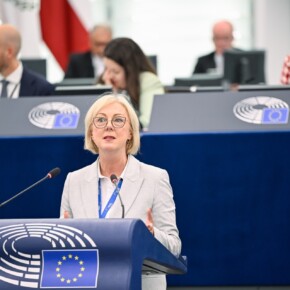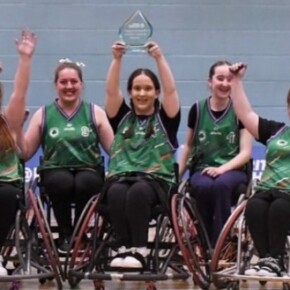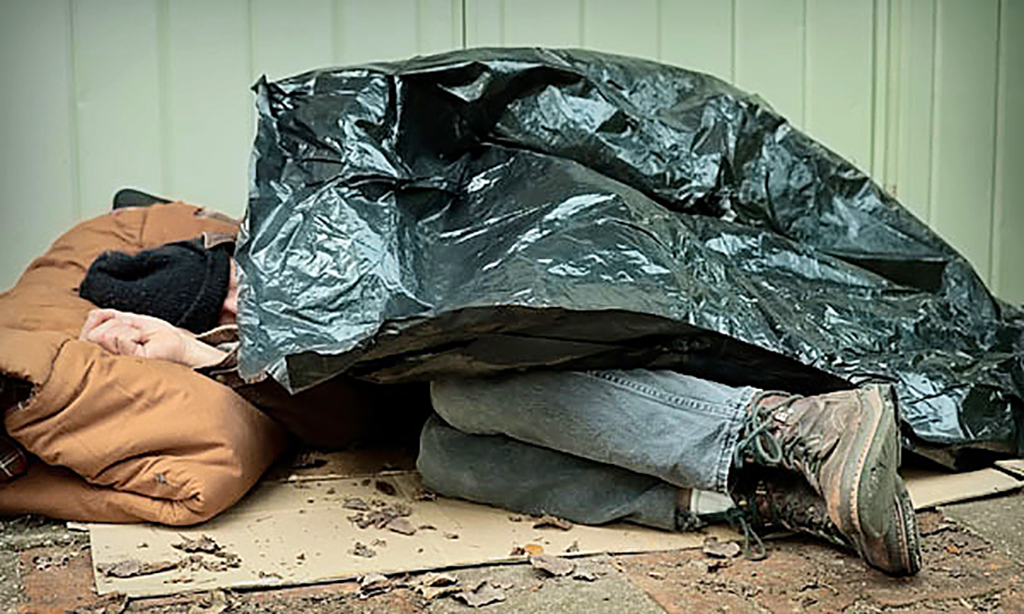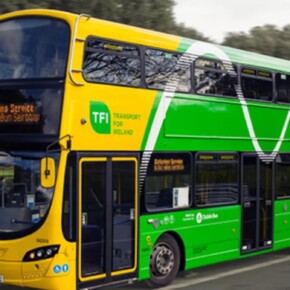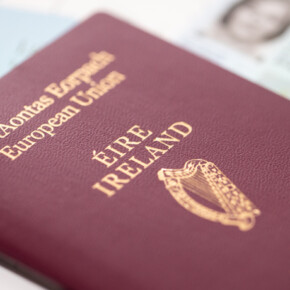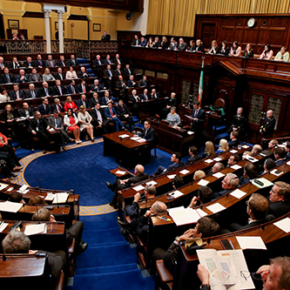The weird and wonderful world of transfers in West Dublin
Mike Finnerty 28 Aug 2024
Transfers are usually contained to the world of football, but they also play a crucial part in Ireland’s electoral system.
August is when Europe’s top teams carry out their transfer business, but across Ireland political analysts and party faithful are combing over transfers from June’s local elections in a desperate search for clues.
While everyone vies for the first and second preference, seven-seater constituencies offer a fascinating insight into where voters’ true intentions lie.
During the 2020 general election, the hashtag #VoteLeftTransferLeft gained traction on social media, and in recent weeks People Before Profit TD Paul Murphy has called on the Irish left, as a whole, to unite in a manner similar to the French left-wing.
On the campaign trail during the Green leadership hustings, Minister Roderic O’Gorman said he would be open to co-operating with Labour and the Social Democrats after the next general election.
The full, detailed results of June’s local elections show that the Irish left has very clear and set-in-stone ideas of who they will vote for and give their transfers to.
With the caveat that turnout for 2024’s local elections were down compared to 2019, local elections are a chance for parties to figure out transfer dynamics and for voters to experiment with their line-up ahead of a general election.
For the purposes of this article, we have focused on a number of election races: the hyper-competitive election race in Cabra-Glasnevin, the North Inner City election race, the scrap in Artane-Whitehall (all Dublin City Council) and Blanchardstown-Mulhuddart, Castleknock and Ongar (all Fingal County Council).
A mini turf war between Fine Gael’s Paschal Donohoe and Sinn Fein’s Mary Lou McDonald saw Donohoe’s team come away with the victory after getting their two candidates Colm O’Rourke and Gayle Ralph elected.
Sinn Féin’s well-documented gamble to run four candidates and only having one victory to show for it (Seamus McGrattan) was a sign that Sinn Féin’s big audition for government ended up with them chipping a tooth on the stage floor after attempting the splits.
Thanks to the magic of vote transfers, we can now ascertain exactly why Sinn Féin ran aground – the left vote simply didn’t transfer to Sinn Féin, and the centre ground vote, which the party made an effort to court in June, flatly rejected their overtures.
The big story of Cabra-Glasnevin was independent left-wing councillor Cieran Perry and Green candidate Feljin Jose going toe-to-toe with Sinn Féin nowhere to be seen.
Both candidates can be considered left-wing or progressive, and between them, they attained 21.3% of first preferences.
Sinn Féin’s four candidates received a combined 16.7%.
Perry ended up being the first candidate elected despite trailing Jose in actual vote share, with Perry picking up transfers time and time again at the expense of Sinn Féin.
As the field of candidates whittled down, it was Social Democrats councillor Cat O’Driscoll who proved more transfer-friendly than Sinn Féin.
Case in point, when the People Before Profit candidate Lena Seale got eliminated on the eighth count with 565 preferences, O’Driscoll received 192 of those preferences, well above Perry’s 83 and Sinn Féin’s candidates combined total of 108.
After Cieran Perry was elected on the 10th count and 57 of his votes were distributed, it was O’Driscoll who scooped 30 votes by herself in contrast to Sinn Féin’s 16.
The Social Democrats and People Before Profit enjoyed quite a lot of overlap in other council races.
In Artane-Whitehall, where the Social Democrats’ Jesslyn Henry and Aishling Silke won two seats for the party in a major electoral breakthrough, the party benefited from being more transfer-friendly than Sinn Féin.
The People Before Profit candidate Andrew Keegan was eliminated on the 2nd count, but of his 268 preferences, 70 of them went towards Henry and Silke, with Independent Left councillor John Lyons receiving 62 and Sinn Féin’s combined three candidates receiving 46 between them.
Our election analysis pointed out that the Social Democrats have stolen a march on the more socially progressive voters that Sinn Féin used to have a monopoly on.
Following Sinn Féin’s recent hard to the centre on key issues, most notably immigration, there is now empirical evidence that this approach cost Sinn Féin multiple council races and the Social Democrats were the beneficiaries.
The Social Democrats are now able to pick up transfers from People Before Profit just as easily as they are able to pick up votes from Fianna Fáil or Fine Gael.
In Castleknock, the grá between the Soc Dems and People Before Profit/Solidarity went both ways.
After their candidate Luke Daly was the first candidate to lose out in round two, the distribution gave Ruth Coppinger of Solidarity a lift with 115 and got Labour’s John Walsh over the quota with 93.
There is quite a difference between Solidarity’s economic perspective (the abolition of capitalism) and Labour’s economic outlook (work within capitalism to deliver a strong safety net).
Analysis of their transfers reveals that the Social Democrats are starting to build a big tent of left-of-centre voters that range from European-style social democrats to outright socialists.
Elsewhere in Artane-Whitehall, Labour’s transfers shook up the race quite substantially.
After their candidate John Nisbet was eliminated with 499 preferences, 166 of those went towards Henry and Silke, but just 36 went towards Sinn Féin’s three candidates who were still active in the race.
Fine Gael picked up 49 preferences from Labour and Fianna Fáil received 50.
In North Inner City, Sinn Féin and the Social Democrats both got a councillor elected apiece (Janice Boylan and Daniel Ennis) but a closer look at the transfer distribution revealed the Social Democrats enjoyed more grá from the electorate.
For instance, after Labour’s Tom O’Connor was eliminated on the fourth count with 323 preferences, 66 of those went towards Daniel Ennis and his running mate Ellen O’Doherty. 70 went towards Green councillor Janet Horner, 50 went towards Fine Gael’s Ray McAdam, but just 20 went towards Sinn Féin’s two remaining candidates.
We can hear the jokes from here – Labour voters would rather vote for Fine Gael again than see Sinn Féin in government.
There may be some truth in comedy judging by how Angela Boyle-Shafer’s votes transferred in Cabra-Glasnevin however; after she lasted nine rounds and her 668 votes were distributed some funky results were thrown up.
42 of those votes went towards Sinn Féin, 45 went towards Fianna Fáil, 126 of them went to Feljin Jose of the Greens and 92 of them went to Fine Gael.
Ballymun-Finglas also threw up some idiosyncratic transfer patterns; after Aontú’s Edward Mac Manus was eliminated on the ninth count with 1174 votes, independent anti-immigrant councillor Gavin Pepper received 219 of those while People Before Profit’s Conor Reddy received 173.
No, we can’t explain it either.
Aontú’s Robbie Loughlin got eliminated in Blanchardstown-Mulhuddart on round 10 and the distribution of his 640 votes saw 154 of them go towards the National Party’s Patrick Quinlan, 154 votes he wouldn’t have gotten from anyone else (and to add to the pot, 76 of them went towards Solidarity councillor John Burtchaell).
Finding out where Sinn Féin’s votes went are also an exercise in confusion.
In Ongar, after Angela Donnelly got elected on the seventh count, her surplus of 313 was distributed.
Aontú councillor Gerard Sheehan received 48 votes from Donnelly, which is the exact same amount People Before Profit’s Kate Relihan received.
Considering the massive gap between those two particular parties on social issues, it’s a clue of just how divided Sinn Féin’s voter base is on social issues.
Ellen Murphy of the Social Democrats received 42 votes, while somewhat perplexingly, the Irish Freedom Party’s candidate Paul Fitzsimons received 28 votes off Donnelly.
In Blanchardstown-Mulhuddart, where the party ran three candidates, Sinn Féin voters showed the transfer discipline they are known for in Northern Ireland.
After Louise Kavanagh was knocked out in round four, her 317 votes went towards eventual winner Breda Hanaphy (130) and fellow Sinn Féin candidate Damien Bissett (98).
In Ongar, after their candidate Phil Lynam lost out in round six he put 1229 votes into the open: People Before Profit’s Ruth Coppinger received 439 of those, and Aontú’s Ellen Troy picked up 272.
June’s elections are practically ancient history now thanks to the allure of a general election just in time for Christmas, but they are a tea leaf in understanding where loyalties lie among the Irish electorate.


